Intelligent Systems Research Centre
Ulster University (Derry~Londonderry Campus)
Seminar Series
Seminars usually take place from 12.30-1.30pm on Wednesdays in person the MS building board room (MS105) and/or streamed online via Microsoft Teams. Contact Cian O'Donnell or Louise Gallagher for more information.
Seminar archives: 2022/23.
21/02/24
Melissa Melaugh

Webpage
A Computational Approach to Uncertainty in DNA Sequences
DNA sequencing is the process of reading individual base pairs from a section of DNA. Genes are the name given to parts of the DNA which encode proteins; for example ion channels are proteins that maintain concentrations of ions within cells. The sequencing of these genes can offer insights into factors such as evolution and disease. During the sequencing process, unknown values 'N' can be substituted in the sequence where the sequencing machine is unable to identify a nucleotide as Adenine (A), Cytosine (C), Thymine (T), or Guanine (G). These gene sequences vary in length; this includes individual genes across the same species. This has led to the use of a process known as k-mer encoding so that a machine learning algorithm can assess these genes without the need for pre-alignment. K-mer encoding works by taking small sections of the sequence and tallying the number of times that such a sequence appears, such as, how many times the k-mer 'ACCT' appears in the overall sequence. The unknown 'N' value presents a problem in k-mer encoding, as this value increases the size of the k-mer feature vector exponentially as the k-mer length increases. In this paper we research the accuracy and computational impact of including, removing, or ignoring this 'N' value for the k-mer lengths 3, 6, and 9 across four Machine Learning algorithms: Random Forest, Multinomial Naive Bayes, Neural Networks, and Linear Support Vector Machine.
Paper link here.
Amin Azimi

Research interests: Decision making, computational modeling of brain rhythms and memory consolidation during sleep.
Nonlinear interplay among hippocampal-thalamic-cortical oscillations during sleep.
The predominant activity of slow wave sleep is cortical slow oscillations (SOs), thalamic spindles and hippocampal sharp wave ripples. While the precise temporal nesting of these rhythms was shown to be essential for memory consolidation, the coordination mechanism is poorly understood. Here we develop a minimal hippocampo-cortico-thalamic network that can explain the mechanism underlying the SO-spindle-ripple coupling indicating of the succession of regional neuronal interactions. Further we verify the model predictions experimentally in naturally sleeping rodents showing our simple model provides a quantitative match to several experimental observations including the nesting of ripples in the spindle troughs and larger duration but lower amplitude of the ripples co-occurring with spindles or SOs compared to the isolated ripples. The model also predicts that the coupling of ripples to SOs and spindles monotonically enhances by increasing the strength of hippocampo-cortical connections while it is stronger at intermediate values of the cortico-hippocampal projections
06/03/24: Arkady Zgonnikov (TU Delft)
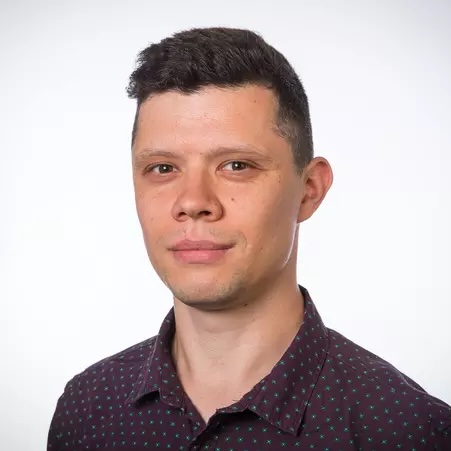
Webpage
I develop cognitive models of human behavior in human-robot interactions, with an emphasis on automated driving. I also work in collaboration with some of the world's best researchers in robotics and AI to incorporate these cognitive models into the design of robots and automated driving systems.
Driver behavior in traffic interactions: A new testbed for computational cognitive models?
Computational cognitive models are typically evaluated in abstract, highly controlled tasks, which allows one to rigorously test assumptions about cognitive mechanisms underlying human behavior in these tasks. However, the lack of research on testing cognitive models in ecologically valid settings often renders it unclear whether the cognitive mechanisms they represent are as paramount to actual human behavior outside the laboratory. One prominent example of this is evidence accumulation models of decision making, which are commonly evaluated in distilled perceptual or preferential tasks with little to no task dynamics or motor constraints. In this talk, I will present the recent work from our lab which investigates evidence accumulation in the wild, specifically in the context of naturalistic human driver behavior in traffic interactions. Unlike traditional decision-making paradigms, decisions in traffic expose humans to complex and dynamic perceptual information as well as response constraints imposed by task dynamics. I will show how these complexities can pose new challenges for evidence accumulation models, and outline how these challenges can be addressed. I will conclude with a perspective on how computational cognitive models can aid in developing autonomous vehicles capable of interacting with humans around them.
20/03/23
Abdoreza Asadpour
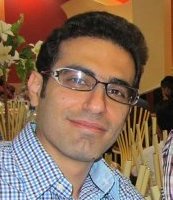
Webpage
Unveiling the Depths of Decision-Making: Early Neural Correlates of Confidence and Deeper Cortical Insights through Dynamic Causal Modelling.
Perceptual confidence, defined as the internal evaluation of the accuracy of one's perceptual decisions, plays a pivotal role in modulating our interactions with the external world. This process involves assessing the reliability of sensory information and making judgments about its accuracy, thereby influencing subsequent decisions and actions. A debate persists within the prior research regarding the relationship between confidence evaluations and decision performance. Some researchers posit that these processes are interlinked and that confidence evaluations can modulate decision performance. In contrast, others maintain that confidence evaluations and decision processes are distinct and operate independently. This dichotomy is exemplified by studies that have identified early confidence correlates during stimulus presentation, as well as research arguing that confidence evaluations occur post-decision. The contrasting perspectives on the temporal dynamics of confidence evaluations highlight the necessity of investigating the neural mechanisms underlying perceptual decision-making and confidence to enhance our understanding of these interconnected processes. While functional magnetic resonance imaging (fMRI) and electroencephalography (EEG)-informed fMRI have been the primary tools for identifying active brain regions and examining functional connectivity, directed connectivity approaches such as dynamic causal modelling (DCM) can offer invaluable insights into the causal relationships between these regions. In this talk, using DCM, I will talk about the complex relationship between neural activities, subjective confidence ratings, and choice-based RTs to delineate their collective impact on confidence evaluation processes, and whether perceptual decision confidence and speed share similar neural circuits.
Yasir Ijaz
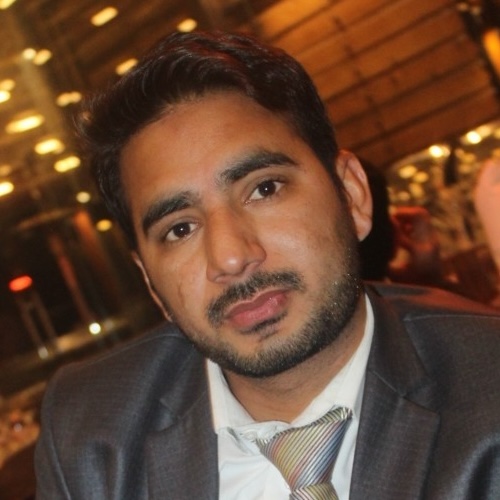
Webpage
Computer Vision for Cobotics
This study considers the problem of using a robotic system for transporting semiconductor wafers within a production facility and loading/offloading wafers onto/from the ports of the wafer processing tools. Every semiconductor wafer processing tool primarily consists of a port that serves as an interface to receive and output wafers, and also several chambers to process the wafers within the tool. Most semiconductor wafer manufacturing processes are extremely complex and highly re-entrant. Here, re-entrance denotes that the wafer can visit the same tool several times during the manufacturing process of a wafer. A single wafer production can have over 1600 unique processing stages (steps). As an important part of factory/process automation, there is a need to employ mobile robots for the transportation of semiconductor wafers.
4pm on 25/03/24: Yogesh Kumar (Indian Institute of Technology Gandhinagar)

Webpage
Yogesh K Meena is an Assistant Professor at the Indian Institute of Technology Gandhinagar, India, with a Ph.D. in computer science from Ulster University, Londonderry, U.K. He received his Integrated Post-Graduate (B.Tech. and M.Tech.) degree in information technology from the Indian Institute of Information Technology and Management, Gwalior, India, in 2010. From 2021 to 2023, he was an AI Software Development Engineer and a Senior AI Software Development Engineer at the University of Essex, UK, where he worked on an Innovate UK - UKRI-funded project in collaboration with Mersea Homes Ltd. From 2018 to 2021, he was a Postdoctoral Research Officer in the FIT Lab at Swansea University, UK, where he worked on an EPSRC-funded project in collaboration with Google, DST Innovations Ltd, and IIT Bombay. Prior to this, he was a Postdoctoral Research Assistant at the School of Computing, Engineering, and Intelligent Systems at Ulster University, Londonderry, UK, and a Visiting Research Fellow at the Center for Mechatronics and the Department of Humanities and Social Sciences at IIT Kanpur, India. His primary research interests include Human-Computer Interaction, Brain-Computer Interface, Eye-gaze tracking, Motor control and rehabilitation, Artificial Intelligence/Machine Learning, and the Internet of Things.
Hybrid human-computer interfaces with applications in assistive technologies and neuro-rehabilitation
Human-computer interface (HCI) and brain-computer interface (BCI) based assistive technologies (ATs) and neuro-rehabilitation can provide novel communication mediums that can aid in removing many barriers that people with disabilities face. Specifically, eye-tracking-based HCIs and non-invasive BCIs open up new pathways of interaction for speech, motor, and cognitively impaired people. Eye-tracking-based ATs can be designed by using a dedicated eye-tracking device which acquires and processes eye-gaze. Similarly, BCI-based ATs and neuro-rehabilitation can be designed by decoding electroencephalography (EEG) signals over the sensorimotor cortex of a user by performing motor imagery (MI) tasks. However, there are several challenges to overcome before eye-tracking-based HCIs and MI-based BCIs become suitable for wider practical use. The usability of eye-tracking-based HCIs is limited due to factors such as low accuracy of detection of the eye-gaze coordinates, difficulties in accurate quantification of user's intentions, and involuntary eye movements. Likewise, the main challenges with current BCI systems are the limited number of commands, the selection of the most appropriate brain activities, environmental noise, and usability issues in real-world scenarios. These challenges can be better addressed by designing a hybrid-multimodal system that involves a combination of complementary neurophysiological and other physiological signals, which is the primary aim of this talk. In short, this talk will cover novel contributions towards 1) the analysis of neurophysiological and other physiological signals; and 2) the design of robust hybrid-multimodal HCI systems with applications in ATs and neuro-rehabilitation for speech and motor-impaired people.
12pm on 26/03/24: Khondaker A. Mamun (United International University, Bangladesh)

Webpage
Khondaker Mamun received Ph.D. from University of Southampton and Postdoc from University of Toronto. He is a Professor of AI and Digital Health at the United International University (UIU), Bangladesh. Prof. Mamun is the Founder of AIMS Lab (www.aimsl.uiu.ac.bd) at UIU, where his team actively performs R&D on the applications of 4IR technologies like, AI, Big-Data and IoT for healthcare, disabilities, education and brain computer interface(BCI). Prof. Mamun established Bangladesh's first BCI lab and Institute of Research Innovation, Incubation and Commercialization (IRIIC) at UIU. He has published more than 200 articles and holds patients. He has invented and implemented intelligent systems, rehabilitations and digital healthcare models including GP model with referrals for urban and rural areas. His research and innovation have been featured in news and recognized locally and internationally. He received National Award from Honorable Prime Minister for his contribution to Autism and "Digital Bangladesh Award 2022" for smart healthcare innovation.
Prof. Mamun is the founder of CMED Health (www.cmed.com.bd), a university research to commercialization that are working to create health inclusion for UHC and serving over 2.5 million people in Bangladesh. He contributed to introduce first DBS surgery for Parkinson's patients in Bangladesh in collaboration with NINS and University of Oxford, UK. Prof. Mamun contributed in WHO/ITU Focus Group on AI4H; Digital Health Strategy and AI Policy of Bangladesh; MTR of 4th HPNSP, MOHFW; Innovation Ecosystem Development, Hi-Tech Park; Industry Accademia Collaboration, UGC. He worked for WHO, Unicef, ADB and World Bank on digital health. His team awarded grants from Bill & Melinda Gates Foundation, IDRC, Canada and other agencies.
Establishing Research and Innovation Culture in Low Resource Countries: Context of Bangladesh
In a low-resource country like Bangladesh grapples with myriad hurdles in research and innovation. A primary concern is insufficient funding, impeding progress and resource acquisition as well as lack of industry, academia and government collaboration. Cultural barriers further obstruct interdisciplinary collaboration, stunting researcher support and commercialisation of knowledge. However, Bangladesh boasts a demographic dividend, urgent societal demands, and a burgeoning entrepreneurial scene, offering distinct prospects. Cultivating a research and innovation ethos demands unwavering commitment, determination and visionary strategies, and a drive to bridge gaps, from research to commercialisation towards building Smart Bangladesh. In this talk we will share experiences of building R&D Lab and Innovation Hub at the university to solve social and industrial problems towards developing knowledge based economy towards transformation to a developed country.
17/04/24: Yasir Ali Shah
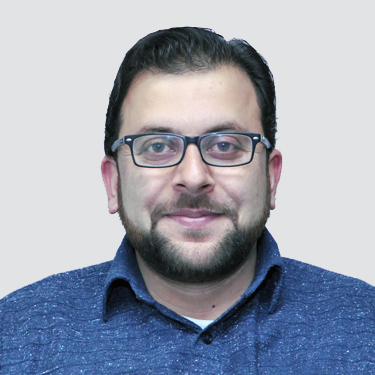
Webpage
Research challenges in the Adaptation of Post Quantum Cryptography
Over the past decade, there have been significant advancements in quantum information processing systems. Cryptography algorithms including RSA and elliptic-curve cryptography (ECC) will no longer be secure in the near future, due to advancements in quantum computing. In order to deploy the quantum secure replacements for the cryptographic standards as early as possible, in 2016, the National Institute of Standards and Technology (NIST) announced a post-quantum cryptography (PQC) project to solicit new cryptographic primitives over the world. After three rounds of competition, the first set of draft standards for quantum resistant algorithms were released in August 2023. The PQC algorithms have larger parameter sizes (Public key, private key, cipher text, signature sizes etc.) and are more computationally intensive compared to their counterparts used today. There is extensive ongoing research aimed at designing architectures with both low area and high performance for PQC algorithms. In this talk, efficient architectures for PQC algorithms will be discussed.
01/05/24
Oleg Senkevich
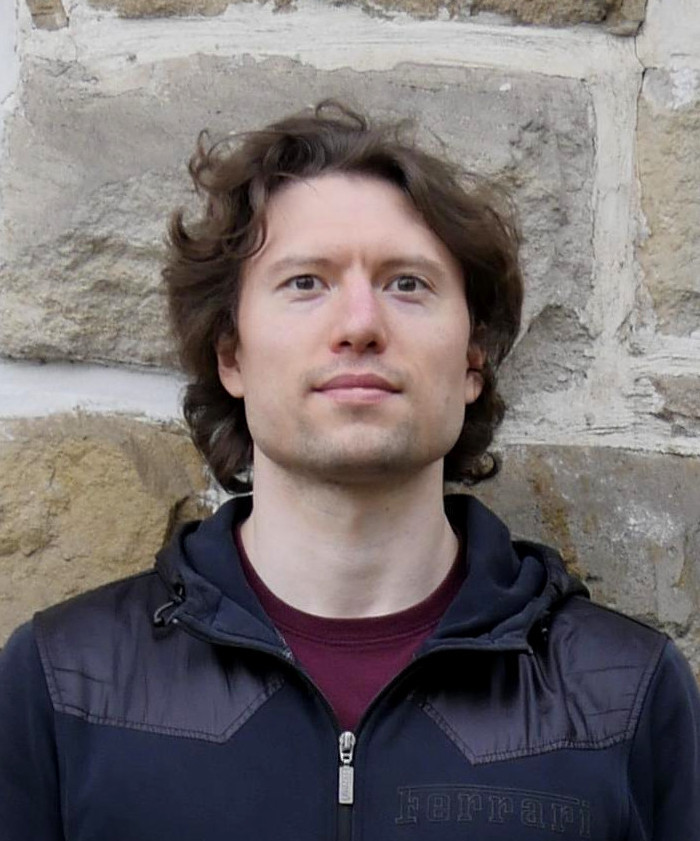
Webpage
Stochastic gene expression model in neurons predicts correlated synaptic noise and heterosynaptic plasticity.
Recent experimental studies suggest that synapses fluctuate in size on time scales of hours-days even in the absence of electrical activity. In this study, we show how such fluctuations can be explained by a simple stochastic model of gene expression that includes gene activation/deactivation, mRNA production/degradation and transport, and protein production/degradation and transport. The model analysis reveals high correlations of protein counts across different neuronal compartments and time. Furthermore, due to resource sharing, the model exhibits different kinds of heterosynaptic plasticity and predicts that experimental outcomes largely depend on the time scales of experiments.
Niall McShane

UU Webpage
bigmeaingsmall.com
Niall Mc Shane is a PhD Researcher in Mixed Reality Brain Computer Interfaces at Ulster University's Intelligent Systems Research Centre (ISRC). Previous to undertaking PhD research, Niall worked as a software developer and technical designer on commercial games and interactive media projects before undertaking a research assistant role in clinical software applications and data visualisation at the ISRC. During this time Niall collaborated on academic research in the area of serious games, virtual worlds and virtual reality in engineering education, future learning environments and immersive digital heritage visualisation as well as leading development in wearable technology software for an Ankylosing Spondylitis mobile application for measuring and monitoring spinal mobility using low cost IMU sensors. Niall's doctoral research is directed towards developing an upper limb motion decoding Brain-Computer Interface, involving aspects of experimental virtual training paradigms and immersive embodied feedback to improve spatial accuracy for imagined 3D limb control applications.
Motion Trajectory Brain Computer Interface for Embodied Upper Limb Control using Spatial Visual Feedback.
EEG-based Brain-Computer Interfaces (BCIs) have shown promise in communication and control applications for severely disabled users but are also used in other applications, such as rehabilitation assistive software applications, entertainment, and computer games. Virtual Reality (VR) is a technology that enables users to achieve a sense of presence in a three-dimensional (3D) virtual environments through spatial visual feedback, virtual embodiment and increased immersion. In combination with a BCI, VR technology has been demonstrated to positively affect the accuracy of motor imagery (MI) control tasks, where the participant is required to imagine their left- or right-hand movement whilst observing corresponding visual imagery.
A grand challenge in the BCI research field is to achieve 3D limb control in real or virtual spaces without activating muscular pathways. To complete this objective, recent studies have applied both a multiple linear regression (mLR) based framework and CNN LSTM deep learning framework for decoding the 3D trajectory of the wrist joint from EEG-based BCI users during imagined arm movements. Real-time limb motion trajectory decoding (MTD) has been achieved using an experimental setup that utilises a kinematic tracking solution to correlate motor imagery with executed motion and decode a velocity via a pre-trained CNN LSTM model. The decoded velocity is applied to a virtual hand, controlled by the participant via imagined movement during an online arm reach task. Furthermore, the experimental setup has presented participants with both spatial 3D feedback via the VR display and two-dimensional (2D) feedback via a 42” 4K monitor. Improved decoding accuracy (DA) of 8% in terms of correlation between kinematic target velocity and imagined decoded velocity has been observed in both offline and online analysis across each axial dimension (x, y, z). Additionally, participants achieved greater spatial accuracy in controlling the virtual hand relative to the reach target position across sessions when using spatial visual feedback achieving an accuracy of R=0.59 with significance P<0.05.
This talk will detail the application of a real-time online BCI using spatial visual feedback and embodiment to improve upper limb control of a virtual hand from imagined movement.
15/05/24: Deepika Nikam

Webpage
Dr Deepika Nikam completed her PhD from Birla institute of technology, India in 2022. Before joining as Lecture at Ulster University, she worked for Academy for International Science and Research, Derry for 2 years as a software developer. She has experience of working on different EU-funded projects such as Erasmus KA2 Robocode, Physiofit (Game development), RoboLab and AR for Edu-Innovation, Word Articulation Project. Her research expertise are in computer vision, machine learning, deep learning and additive manufacturing.
AI to enhance laser based additive manufacturing process
Additive manufacturing (AM) or 3D printing is considered a game-changing technology for the manufacturing of complex products. Metal based additive manufacturing technology has potential to manufacture complex geometries, particularly manufacturing of artificial biomedical implants. Additively manufactured implants are expensive and is creating lot of economic pressure on the healthcare system. Therefore, manufacturing of affordable implants is still a challenge faced by the healthcare manufacturing industries. To address this challenge, it important to overcome some issues in laser based additive manufacturing process such as process optimisation and defects elimination. Making additive manufacturing process smarter by using AI can solve the problem to the grater extent. Therefore, the current research is focused on automatic extraction of the deposition geometric features and optimize the process parameters required for manufacturing components by laser additive manufacturing process. Utilise the capability of machine learning to automatically classifying and detecting defects in the components obtained from laser additive manufacturing process. This talk will give the detailed information about additive manufacturing process and application of artificial intelligence in AM.
29/05/24
Nidhin Thandassery Sumithran
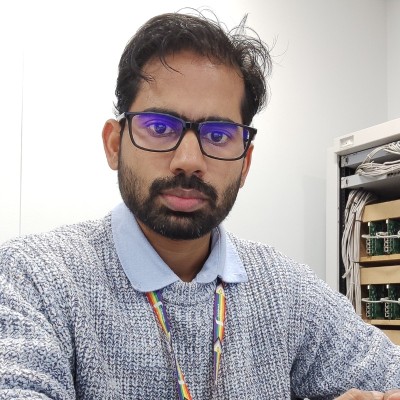
Webpage
Dr Nidhin is a Research Associate currently working on the EPSRC-funded project 'Nervous Systems'. Before joining Ulster, he worked for 2 years at the University of Warwick as a Research Fellow on the 'Virtualised Hardware Acceleration for Data Analytics' project. Previously, he spent almost 3 years as a front-end VLSI Design Engineer at HCL Technologies, collaborating with Intel PSG projects. He completed his PhD research at the Indira Gandhi Centre for Atomic Research, affiliated with the Homi Bhabha National Institute, India, in 2020.
FPGA Prototyping of Novel Fault Detection Methodology for Modern VLSI Systems.
Faults in VLSI systems can arise for a variety of reasons, including e.g., manufacturing defects, thermal issues, and radiation-induced faults. This work introduces a novel fault detection methodology from sensing errors in the synchronous and combinational logic paths of digital systems. Additionally, it presents a generic, configurable fault injection mechanism for generating various fault types to evaluate the efficiency of these detectors when inserted into a design. This approach enables the prototyping of fault detection mechanisms on FPGAs and undertaking sensitivity analysis of e.g., RISC processors to faults. A case study is presented on the architecture of a RISC-V processor core with the insertion of novel detection units within the core. The injection methodology is used to realize fault cases in the core and evaluate the impact on performance from generated errors. The results demonstrate the ability to identify errors across synchronous and combinational logic paths and the flexibility of the detection unit in core integration. It also presents the initial results of classifying the severity of faults using SNN.
James McAllister

Webpage
James is a PhD Researcher in mathematical/computational neuroscience, studying somewhere in the intersection of network structure and function, and is particularly interested in the role that synaptic plasticity has in this dynamic interplay. He is a Mathematics graduate of Trinity College Dublin, and received a PGCE in Mathematics and a Masters in Research from Queen's University Belfast. He is interested in all the ways in which maths is used to better understand the world around us, and, as in the case of neuroscience – the world within us.
Network structure in reservoir computing, brain connectomes, and heterosynaptic plasticity.
A clear understanding of the bidirectional connection between structure and function in computational networks is elusive. This is true both in artificial and biological contexts (Park & Friston, 2013). Network structure is known to be related to important computational features such as information processing, memory capacity, activity correlation, efficiency, (Watts & Strogatz, 1998; Pernice et al., 2011; Achard & Bullmore, 2007) etc., but how structure exactly influences network dynamics (and vice versa) - and how synaptic plasticity participates or modulates (Chater & Goda, 2021; Stampanoni Bassi et al., 2019) - is not so well understood. This work seeks to uncover how the synaptic plasticity-based shaping of network connectivity in both artificial and biological networks may play a role in increased computational capacities. We utilise a combination of graph theoretic and topological tools, reservoir computing networks, brain connectomes, and proposed heterosynaptic plasticity rules.
12/06/24: David Meredith (Hartree Centre)
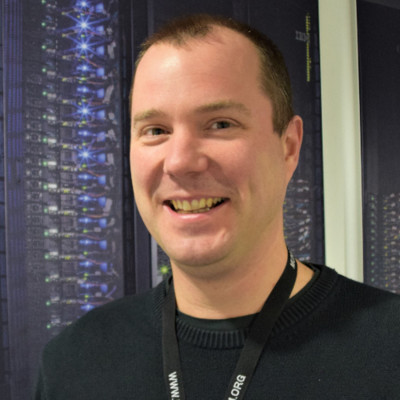
Webpage
David is Research Software Engineering (RSE) group lead and a software architect at the STFC Hartree Centre with 20+ years software dev experience, particularly in Web, Grid, Cloud and Enterprise domains. He completed a PhD and post-doc in 2D and 3D computer modelling of lithosphere dynamics, later moving to STFC in 2004 to change direction and start a career in the STFC e-Science Centre as a developer working across multiple scientific domains with a role to 'put research to work.' David has built software for the UK National Grid Service (NGS), a data and compute Grid for the UK research community, an ancestor of the modern cloud. Later, he became co-service manager and lead developer for several production e-infrastructure and security services in the UK and EU. These included the Grid Operations Centre Database (GOCDB), a grid topology database and Identify and Access Management (IAM) service for the European Grid Infrastructure (EGI), and the UK e-Science Certification Authority (UKCA), a national service issuing digital certificates for the UK e-Research communities through a public key infrastructure (PKI), once the largest academic CA in the world.
RSE @Hartree - What Our Devs Actually Do
The STFC Hartree Centre's purpose is to unlock the high growth potential of advanced digital technologies for UK industry. To do this, the RSE group deliver real customer value by engineering software solutions that put Hartree's cutting edge software and systems into the hands of our clients. The RSE team has three core capabilities under advanced digital: 1) Applied HPC, AI, and High-Throughput computing including scientific workflows, parallelising & containerising codes, increasing performance, maintainability, portability & reliability; 2) Full-Stack & DevOps including Webdev, cloud-ops, enterprise apps & services, security; 3) Data engineering including MLOps, data intensive apps & pipelines. Our work is project bound and the team are responsible for the full software development life cycle from project scoping, design-thinking, requirements analysis, specification, KPIs and iterative development. Working closely with the client is mandatory for our projects which range from small ~3 month proof of concepts to multi-year production builds.
26/06/24: Barbara Webb (University of Edinburgh)
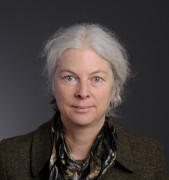
Webpage
Barbara Webb runs the Insect Robotics group at the University of Edinburgh where she has been Professor of Biorobotics for the last ten years. She has published influential articles about the use of robot models to enhance understanding of how animals, particularly insects, are able to interact successfully with the world. Her recent work has focussed particularly on the brain mechanisms that underlie sophisticated navigation and learning in foraging insects such as ants.
The neural basis of the honey bee dance language.
Honey bees are famous for their ability to communicate the
location of food to their nestmates by dancing on the honeycomb. Using a
mixture of behavioural experiments, neural mapping and computational
modelling approaches, we have shown how the bee's brain, in particular the
central complex circuit, could track its own location relative to the hive
(path integration) and control straight line flight back home. We have
also suggested how the food location could be stored and used in
interaction with path integration to return directly to the food on
subsequent foraging trips. Most recently, we have proposed how this vector
memory could be re-expressed in the dance behaviour, transforming a flight
vector relative to celestial cues into a waggle trajectory relative to
gravity on the vertical honeycomb. By recording the antennal positions of
bees following the dance, we have discovered how they detect their
relative angle to the dancer, and have extended our model of the central
complex to explain how followers could thereby acquire the vector that the
dancer is signalling. This provides the first plausible account of how
honey bees are able to intepret the dance of their nestmates.
11/07/24: Anwesha Khasnobish (Tata Consultancy Services, India)

Google Scholar
Dr. Anwesha Khasnobish is a Scientist at TCS Research, India. She completed her doctoral studies in biomedical engineering from Jadavpur University, Kolkata, India. She had been awarded Swiss Govt. Excellence Fellowship to pursue post-doctoral research. She was awarded TCS Young Scientist Award in 2021. She works in the field of bioinstrumentation, physiological sensing, bio-signal and image processing and medical radar. Currently she is working on application of microwave and mm-wave for human sensing and monitoring.
Microwave Sensing and Imaging: A New Era in Physiological Monitoring.
Microwave sensing and imaging have opened a new era for non-invasive, non-contact human sensing. This talk will focus on discussing the need for unobtrusive human sensing, why microwaves in this respect, the theory behind human monitoring and finally presenting our in-house devised solution for human sensing. Our human sensing solution can detect human presence, track the person, detect the type of activity he/she is performing, and most importantly monitor the cardio-pulmonary activity. Following the vital sign sensing, we have used the millimeter wave technology to image orthopaedic implants, using a novel imaging algorithm.
19/07/24: Riya Mishra (Indian Institute of Technology, Kanpur)
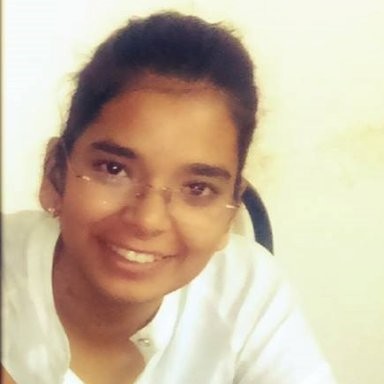
Riya Mishra is a PhD student at the Indian Institute of Technology, Kanpur, India. She completed her master's degree in psychology at Banaras Hindu University, India. Her research focuses on emotion, facial expression, psychophysics, and psychology. Currently, she is working on extracting and recognizing micro-expressions, contributing to a deeper understanding of emotion perception and psychological processes.
Extraction and recognition of spontaneous micro-expressions.
Our research delves into micro-expression complexities, which are involuntary and last for less than 500 milliseconds, indicating genuine emotional states. We have developed a system capable of identifying these fleeting expressions with high accuracy by integrating high-speed cameras and sophisticated image processing algorithms.
We are comparing micro-expression spotting with interoceptive measures and eye-gaze parameters to enhance our understanding of emotional responses. Additionally, we are analyzing how human participants can be efficiently trained to detect micro-expressions in real-life scenarios, aiming to improve the accuracy and reliability of emotional detection in practical applications.